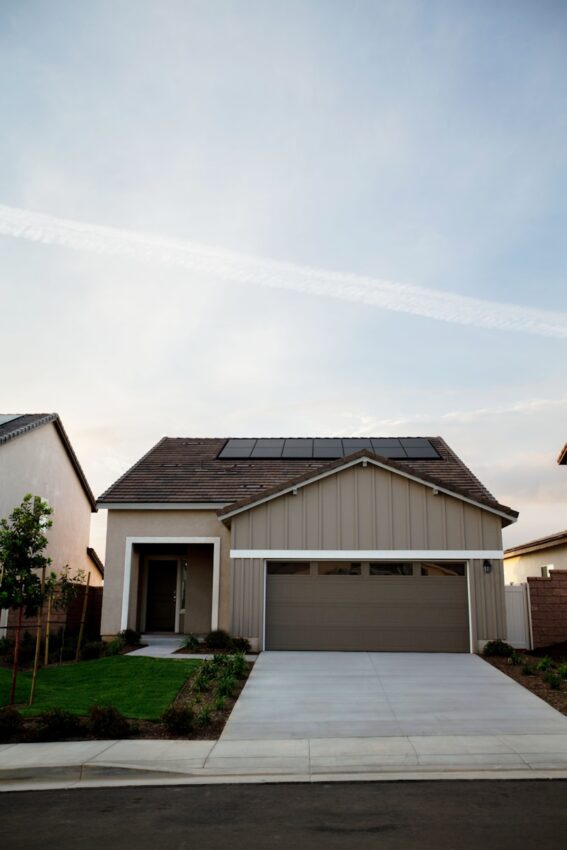Improving your home’s energy efficiency doesn’t mean giving up its unique charm.
Whether you’re in a historic craftsman or a cozy mid-century home, practical updates can keep it stylish and functional. From enhancing insulation to modernizing key elements, it’s possible to cut down on bills while preserving character.

Curious about the ways you can balance comfort and authenticity? Explore practical ideas that deliver both!
We’ll highlight easy-to-implement solutions, blending aesthetics with performance seamlessly for homeowners who want the best of both worlds.
Insulation Upgrades Without Changing the Look
Heating and cooling are major energy expanders in homes. And at times, heat is lost through outdated insulation that doesn’t match today’s efficiency standards.
Adding materials like spray foam or blown-in cellulose behind existing walls maintains the appearance of interiors while enhancing thermal performance. Even classic plaster walls can stay intact with modern techniques that prioritize preservation.
The right insulation approach ensures energy savings without sacrificing aesthetics—a win-win for historic or stylish properties looking to retain their charm.
Consider Energy-Efficient Doors and Windows That Match Any Style
Happen to know of other target areas of heat loss and cold drafts? Well, that’s windows and doors! Outdated designs often let energy escape, which drives up bills while leaving your home uncomfortable.
Energy-efficient options now come in countless styles, crafted for both modern builds and timeless homes. Installing replacement windows or doors not only improves insulation but also enhances security and updates the aesthetic.
Thoughtfully chosen replacements maintain your home’s character while making it more efficient, proving charm doesn’t have to cost comfort.
Hidden Benefits of Modern Roofing Materials
Roofing innovations now blend technology with durability. Many modern materials, like metal or composite shingles, mimic traditional aesthetics while improving energy performance. Reflective coatings reduce heat absorption during hot months, keeping interiors cooler without overworking your air conditioning.
Additionally, updated roofing provides better protection against moisture and weather-related wear, safeguarding insulation from damage. These advancements offer long-term cost savings and efficiency without compromising the architectural appeal of your home’s original design style.
Using Natural Lighting to Save Energy
Yes, solar technology is revolutionary. But sometimes the sun’s simplest gift—natural light—is overlooked as an energy saver. Strategically placed windows and skylights brighten interiors during the day, reducing dependence on artificial lighting.
South-facing windows provide warmth in cooler months by letting in more sunlight, complementing heating efforts. Meanwhile, window treatments like UV-blocking films manage heat during summer.
Harnessing daylight smartly creates a visually inviting home while lowering electricity use year-round without altering your style.
Small Fixes with Big Impact: Sealing Gaps and Cracks Properly
Energy escapes from more than just doors and windows. Hidden cracks along baseboards, around pipes, or near vents silently let conditioned air slip out.
Air sealing is an effective way to preserve energy without major renovations. Materials like caulk and weatherstripping are unobtrusive yet powerful in eliminating drafts.
By addressing these overlooked details, homeowners improve insulation performance. That’s well enough to maintain consistent indoor temperatures and enjoy a noticeable drop in energy bills.
Blinds, Shades, and Drapes for Improved Efficiency
Window coverings do more than complete a room’s decor. They also regulate indoor temperatures and cut energy waste by blocking heat or cold from escaping through glass surfaces.
Options include:
- Thermal-backed curtains: Insulate windows to prevent drafts.
- Cellular shades: Trap air within honeycomb layers for added insulation.
- Reflective blinds: Redirect sunlight outward during hot months.
These versatile choices reduce utility costs while enhancing comfort. They let you maintain energy efficiency without sacrificing your home’s character or style.
Heating and Cooling Systems Built for Older Homes: Time to Upgrade?
Traditional HVAC units often struggle in older homes with unique layouts or smaller ductwork. Modern systems, like mini-split heat pumps, are designed to adapt seamlessly to these spaces while providing efficient heating and cooling.
Zoned temperature control allows different areas of the home to maintain optimal climates without overworking the system. Innovations like variable-speed compressors also minimize energy use during mild weather conditions. These upgrades deliver tailored comfort alongside noticeable reductions in energy consumption.
Replacing Outdated Appliances with Sleek Energy-Saving Models
Outdated appliances are often silent culprits behind inflated energy bills. Modern energy-efficient kitchens feature models that not only consume less electricity but also offer advanced features that optimize their performance.
Innovations like smart sensors in washing machines or refrigerators with improved insulation reduce unnecessary waste while maintaining functionality. Upgrading provides immediate savings and long-term reliability.
Consider upgrades like:
- Refrigerators with inverter compressors
- Induction cooktops for precise cooking efficiency
- ENERGY STAR-rated dishwashers
- Smart thermostats to streamline climate control
Energy efficiency and timeless charm can coexist beautifully. Thoughtful updates save money. They protect resources and ensure homes remain functional while preserving the character that makes them unique and special to homeowners.
